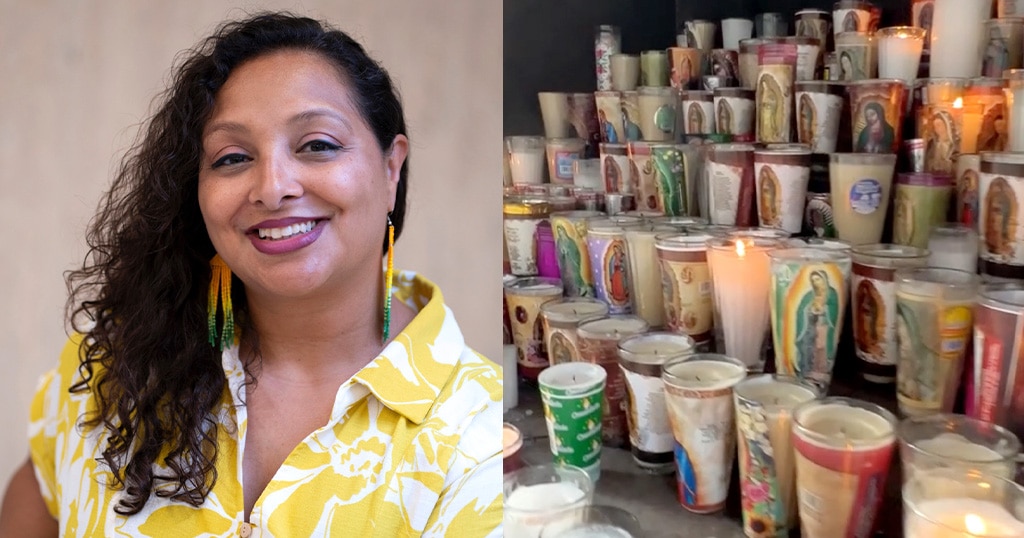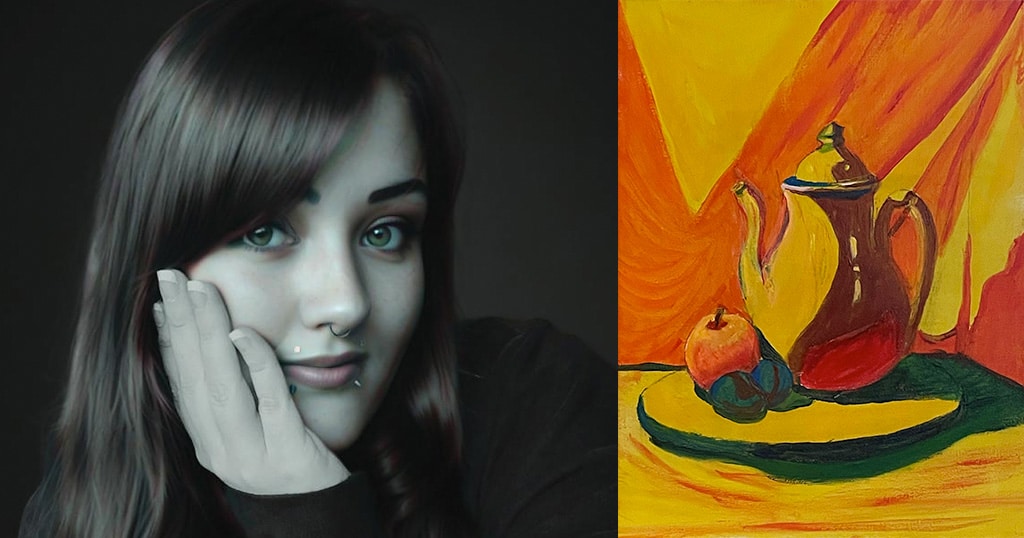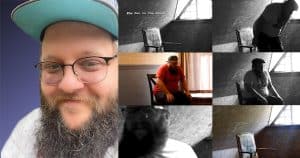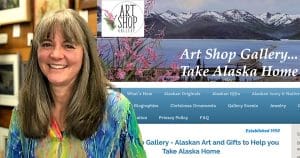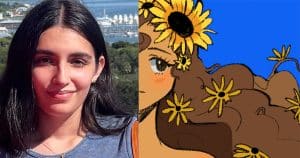Designing for Social Change
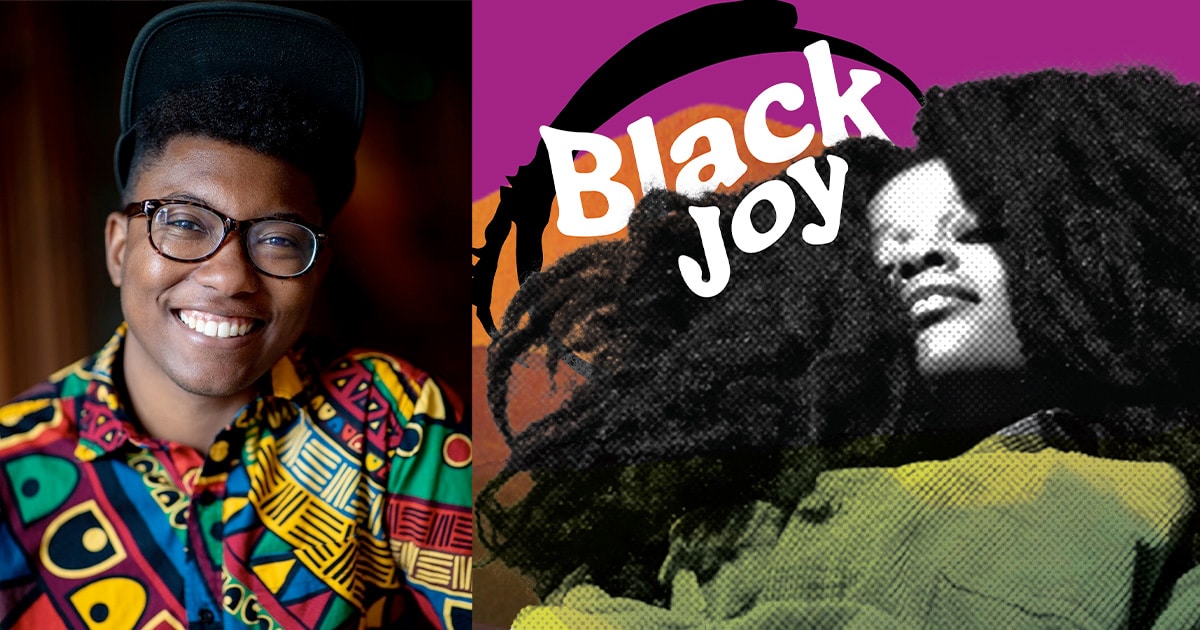
Q: Micky, can you tell us a little bit about your path towards becoming a professional designer?
I came into my design career in a very unorthodox way. I went to college at the University of Maryland, College Park, from 2008-2010; I ran out of money and had to move back home to Virginia. At school, I went from wanting to go into architecture to government to communications before I dropped out. After I left school, I had to get through much grief about not having a college degree. As both a Black person taught to not fail at all costs and a person who has a family full of teachers, I felt lost in what to do next. However, a low-paying job at a preschool center showed me my skills in graphic design. I designed calendars, bus ads, billboards, website graphics, flyers, and posters, all for not enough money. Still, it did give me the experience of working with print materials and figuring out what comes naturally to me as an artist.
After that, I found my passion for grassroots organizing work in Richmond, VA. I worked with an LGBTQ organization called Southerners on New Ground (SONG), and the world opened to me. I learned more about social justice movements of the past and present and what it takes to create racial and economic change in the South. I also grew my communications and design skills, making yard signs, flyers, and social media graphics.
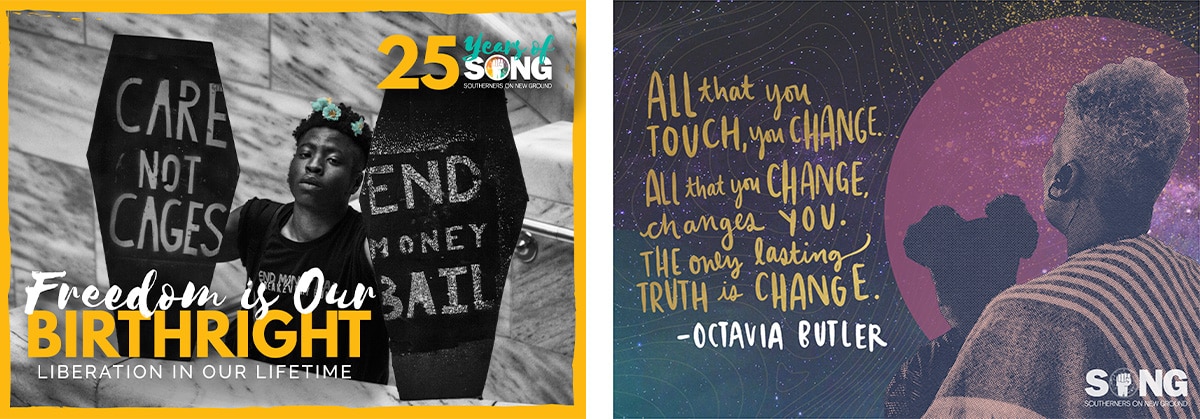
I eventually got a job on the Communications team at SONG and spent a long journey growing my confidence as a designer for movement. It took me a while to take myself seriously as a designer, and the freedom of this job gave me a chance to skill up in ways I hadn’t been able to before. I decided after attending communications training that I wanted to rebrand SONG. It has been rebranded recently with a new logo, but the previous Comms team was only one person, and with a team of two now, we had more space to create the structure to get more comms work done. Based on what I knew about SONG and what I saw as a member for years, I developed a new style guide, fonts, a color palette, and logos. I wanted something to match more of the energy and spirit of the organization, and we moved from a traditional rainbow to an earth-tone rainbow to represent both the beauty and complications of the Southern ground we are on and the multi-racial base. After rebranding, I designed letterhead, banners, social media graphics, and reports.
I’m also proud of being the lead designer for my friend Nicole Townsend’s campaign for the City Council of Ashville, NC. Nicole was previously an organizer at SONG and had a talent for community building. She also has a long history of organizing in her family, going back generations from sharecropping to the Civil Rights Movement. This inspiration led me to use Bayard and Martin’s fonts from the foundry Vocal for her logo and other brander materials. I used greens and black and white photos to call back to protests and movement work and based her logo on a button from that period. I designed social media materials, merch, a logo, and a website for her campaign. And although she didn’t win, she inspired many people, and her brand’s consistency helped her tell her story.
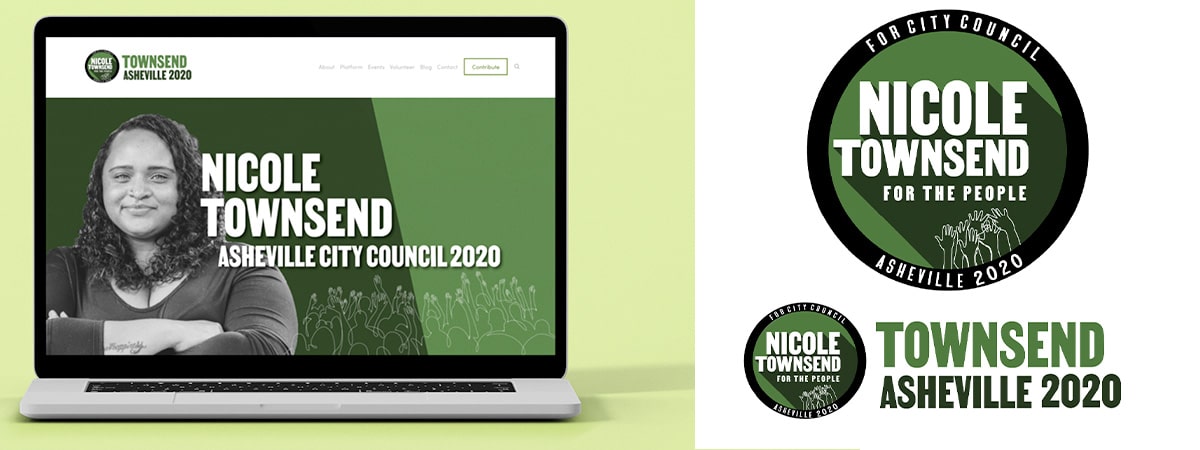
I’m currently working at an organization called National Domestic Workers Alliance (NDWA) as a Junior Graphic Designer, helping implement their new rebrand into the organization. The National Domestic Workers Alliance (NDWA) works for the respect, recognition, and rights of more than 2.2 million nannies, housecleaners, and home care workers who do the essential work of caring for our loved ones and our homes.
Through all these experiences and others, my goals as an artist are to design for social change in the world and create work, I believe in. I’ve seen how design can move hearts and minds; visuals are powerful and impactful, regardless of literacy level or language, and some symbols and visual references are universal.
Q: Can you tell us why you returned to pursue a BFA in Graphic Design after receiving your Undergraduate Certificate?
I love the Undergraduate Certificate program at Sessions! I was self-taught up until that point, and although I was working and volunteering using graphic design skills, I wanted to learn how to use Adobe Creative Suite products and understand the fundamentals of graphic design. I knew how to create things but wasn’t always sure why something worked. I liked that the program was easy to build into my schedule and very clear and practical with the goals of the courses.
I came back because I figured if I were to finish my degree, I wanted to do it in something I cared about, like graphic design. I also got so used to designing for organizations and clients, and I wasn’t sure what my style as a designer was. Throughout the semesters I’ve had so far, I’ve realized that my style is inspired by post-Modernism tendencies to experiment with various elements like photo cutouts, textures, and text. I like using references from Black media and social movements and challenging viewers’ perceptions of our color understandings around gender, race, and sexualities.
So far, the BFA program has been great! The main differences are the program’s length and the variety of classes. It’s been cool challenging myself with courses on web design, UX/UI design, and photography, which all felt very new to me. It gave me a lot more insight into what I was capable of, especially when something didn’t come as naturally easy to me.
Q: Which course(s) have been the most challenging, fun, or rewarding and why?
The most fun and rewarding courses would probably be Layout Design, Print Production, Graphic Design II, and UX/UI Design. And the most challenging so far was perhaps Computer Technology, Digital Photography, and History of Art.
I love the more project-based classes and tend to explore creatively with the prompts, especially when they are more open-ended. I think some of the projects in these classes helped me develop my style, and it helped me see what references, elements, and ideas in design I tended to gravitate towards.
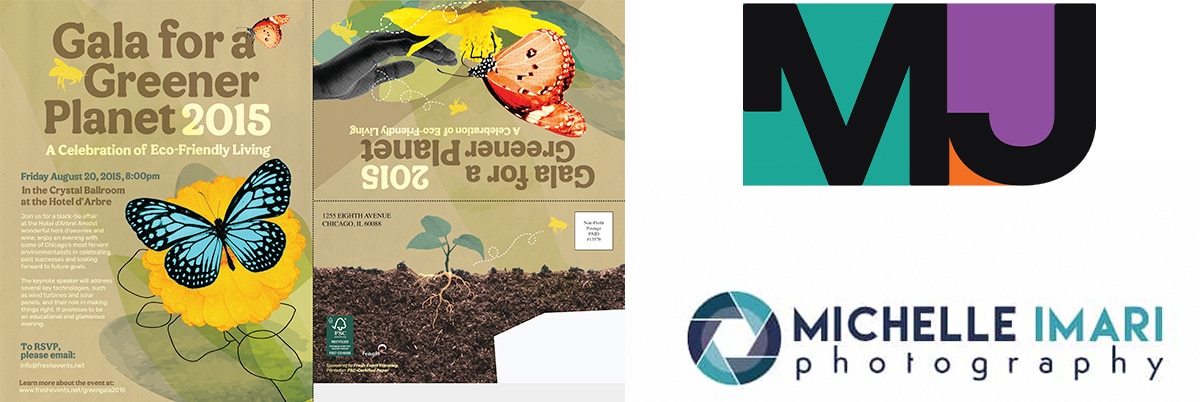
For my photography class, I’ve taken photos before with a camera, but not in a long time and the camera I got for this class was the first nice camera I’ve owned in years. So, it took much practice to figure out how to use it and take exciting photos. I got to a place towards the second half of the course where I took pictures I was proud of. With Computer Technology and History of Art, I’m not always the best at memorizing content for tests, so studying for these classes was sometimes challenging.
Q: Can you tell us about your creative process when designing the Feelify prototype you made in your UX/UI Design course?
I had so much fun with this project! Initially, it was hard to come up with an idea, I had never thought about designing an app before, and I wanted to find something that felt new and interesting. I have this card set called the Box of Emotions, and it is broken into sections of larger emotion categories. And each section has cards that give you multiple related feelings and a description about each on the cards. At the time, I was dating a previous partner, and we were going through some conflict.
It can be challenging for me sometimes to figure out how to express how I feel, years of shame from not wanting to be perceived as a problem or a burden, and not always trusting that people will take my feelings seriously. I decided that an app that took the basis of the Box of Emotions game and made it easy to compare emotions, read descriptions, and look deeper into them, and find examples would be so helpful for people. It would help me.

The new app, Feelify, will instantly offer users access to many feelings and emotional words. The user interface will show categories like Happiness, Enjoyment, Possibility, Ego, Heartache, Angst, Loathing, Bitterness & Emptiness, which offer thousands of emotions that fit those categories with definitions, examples, and a corresponding color gradient to identify with the feeling.
It can be so easy to get trapped in your head when you have anxiety or are talking about hard feelings with someone. For the design aspect of the app, I took inspiration from the gradients in the Box of Emotions game and researched various UI kits with icons I thought would fit with the style I was thinking of. I used high-quality stock photos to show representations of the emotions people would scroll through, and besides the background gradients, I kept all the icons and text white for simplicity. I wanted the app to feel pleasing and calming to look at, hopefully easing people into learning and sitting with positive and negative emotions. Most importantly, I would want the app to contain additional resources outside of just descriptions of the feelings to outside websites and therapists that can help people continue to move through their emotions.
Q: How have your previous studies in Marketing and Communication and your interest in film helped you in your journey as a designer?
All these things helped me gain references, understand different audiences, and know how and when to challenge those audiences. Graphic design isn’t like traditional art when what is created is primarily for the artist. This is art with a purpose and a goal, whether that goal is to sell a product or move your base into taking action for your cause, like donating, joining an organization, learning something new, or coming to an event.
Graphic design also is as much about the visual as it is about how the visual carries the message. An organization I trained with called Reframe has an ethos that strategic communications is getting your message in front of the right people at the right time. I hold this as truth with both written messages and visual design. It’s hard to develop visuals when you, as a designer, are trying to talk to the “general public,” which is impossible and not coming from a specific point of view.
Communications work and film history gave me a picture of the past, present, and future. Movies are not created in a vacuum; they take inspiration from society, from art movements to social justice movements to science fiction; pop culture is an excellent tool for understanding the world and designing a new one.
Q: Outside of school, are there any projects you are working on (for fun or professionally)?
Right now, I’m currently working at NDWA doing things like reports, social media graphics, PowerPoint templates, and more. You can find them on social media @domesticworkers on Instagram, Facebook, and Twitter. I am also an instructor for Social Movement Technologies Graphic Design for Organizing program from September 20th to November 17th. It teaches people from non-profit or union organizations how to create designs that stand out, drive action, and help win campaigns.
I have a podcast with my friend Michelle called Taking TV Too Seriously: (https://takingtvtooseriously.buzzsprout.com), and you can follow us on Instagram @takingtvtooseriously, I created the branding for it and Michelle created the theme song.
Lastly, inspired by the stamp project from my Graphic Design II class, I developed a photo series called Black Joy which is collage based and uses many colors mixed with black and white photos of Black people.

Q: Where can people find your work or follow you on social media?
You can find my portfolio here! https://mickyjordan.com
To learn more about the BFA in Graphic Design program, visit the BFA in Graphic Design program page at Sessions College.
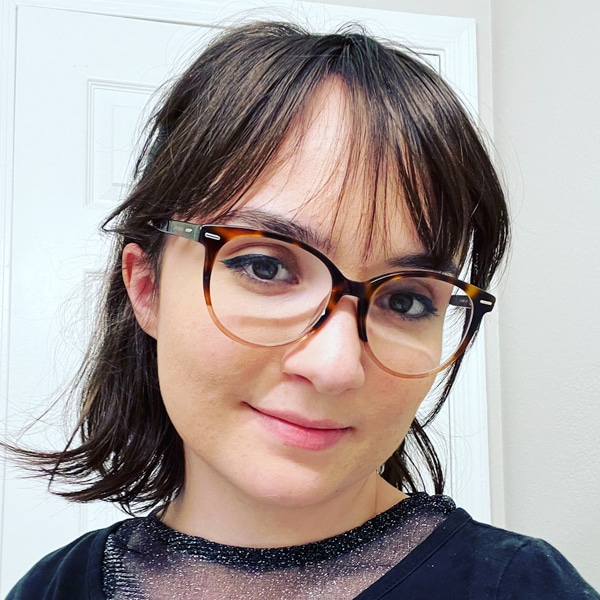
Lauren Hernandez is the Manager, Faculty and Curriculum Development at Sessions College. Lauren is an artist, educator, and former middle-school teacher with a passion for everything art-related. Read more articles by Lauren.
RECENTLY ON CAMPUS























